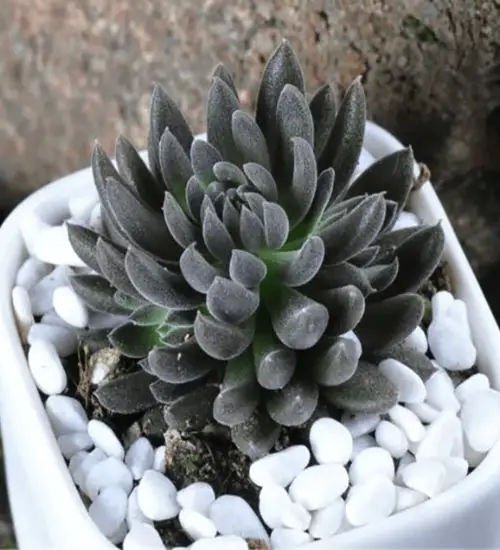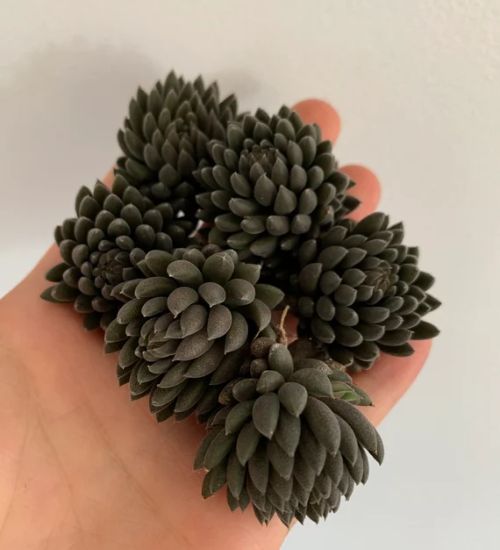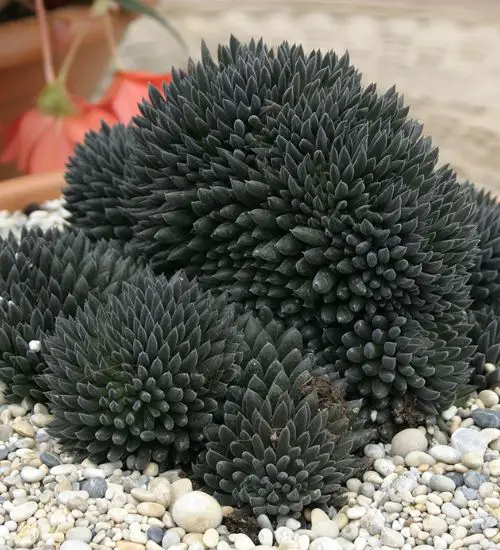Sun: full sun to partial shade
Water: Typical water needs for a succulent
Temperature: Zone 7a from 0° F to 5° F (-17.8 ° C to -15° C) to Zone 11b from 45° F to 50° F (7.2° C to 10° C)
Winter Survival: Cold hardy
Propagation: leaves, offsets, division
Flower: in the late Summer or Fall
Flower Type: white
Toxic: Generally non-toxic to humans but can be toxic to animals.
Dormant: winter
Space Requirement: Indoors & Outdoors
Common Problems: Plants may rot if overwatered, Fungal diseases, pests
Where to buy Sinocrassula yunnanensis?
Basc Care for Sinocrassula yunnanensis
Watering
Regular watering period should be every 2 weeks
One simple tip for you is that you can use some online apps to check the soil status before you go water your succulents. I would recommend the ThePlantsCheck app, it has some nice features there.
Fertilizing
Only feed this succulent during its active growing seasons which means winter. Use the right fertilizer applied in the right amounts. Applying half-strength balanced fertilizer every month or so is recommended for optimal results.
Do not fertilize during winter as the plant is dormant.
Sun & Location Requirements for "Sinocrassula yunnanensis"
Sinocrassula yunnanensis does best when placed in an area that receives full sun to partial shade throughout the day. This variety of succulents can tolerate direct sunlight for short periods, but if the temperatures get too high or the light is too intense it may be beneficial to find a shadier spot.
As per this succulent profile, it is only able to stay healthy when the environment temperature is above the range of zone 7a from 0° F to 5° F (-17.8 ° C to -15° C).
Sinocrassula yunnanensis is a member of the Sinocrassula family and is known for being cold hardy. It is able to survive temperatures down to 0°F, making it an ideal choice for areas with cold winters. The succulent's thick leaves and stems help retain moisture in its cells, allowing it to survive through frigid temperatures. Additionally, the colorful foliage of Sinocrassula yunnanensis adds a festive touch to any garden in cold areas.
Any succulents in the group will need a medium space to grow. You can place your pot at your table or window. Since this plant needs more space than mini succulents, you should consider do not plant them together with other succulents/plants.
Sinocrassula yunnanensis also benefits from some indirect light throughout the day as well, so make sure you give it enough space to soak up light without becoming too exposed to heat.
Propagation
Propagating succulents from leaves is an easy and cost-effective way to grow new plants. All you need are a few healthy leaves from the mother plant, some potting mix, and regular watering. After a few weeks you'll have brand new succulents that you can watch grow!
Succulents can be propagated easily by taking offsets from the mother plant and replanting them in fresh soil. The offset will eventually grow into a new succulent that is identical to its parent.
Toxicity

If you’re looking to add a bit of greenery to your home or office, be sure to do your research before purchasing Sinocrassula yunnanensis. This lovely plant may have some toxic properties when ingested by animals, so it’s important to keep them away from curious pets.
Pests and Diseases
Sinocrassula yunnanensis can be affected common pests and diseases like most of the other succulents such as mealybugs.
If you do spot any of pest signs, you can treat your succulent using below methods.
- Mealybugs: quarantine, clean infected plants, soapy water.
Besides that, to prevent serious health issues from happening, keep your succulent in a well-ventilated area and check it regularly for any signs of pests or health problems.


